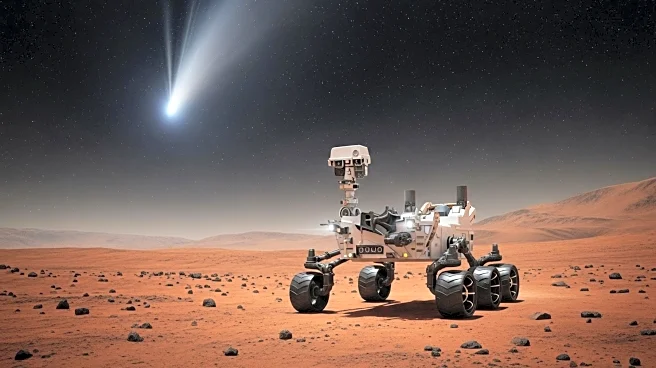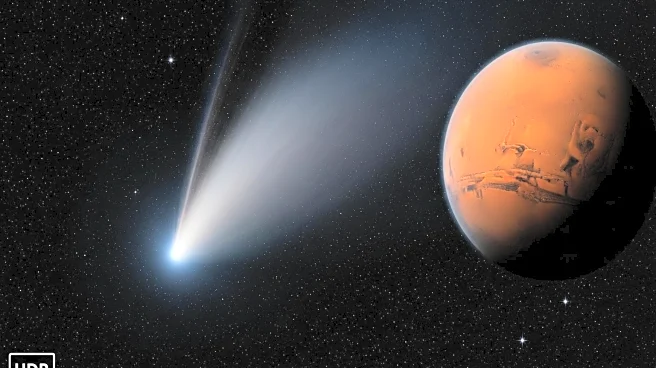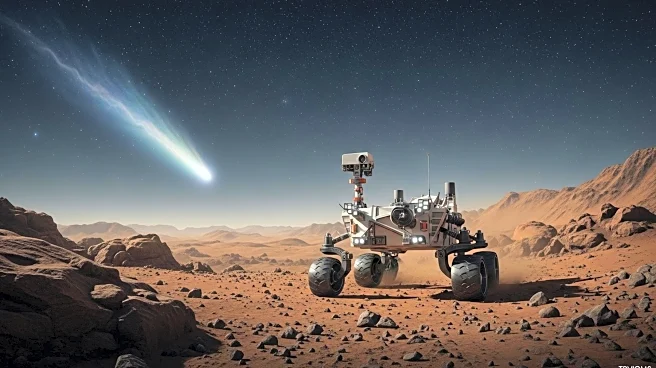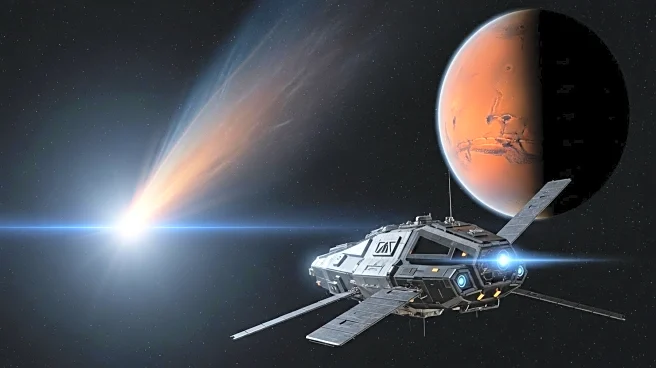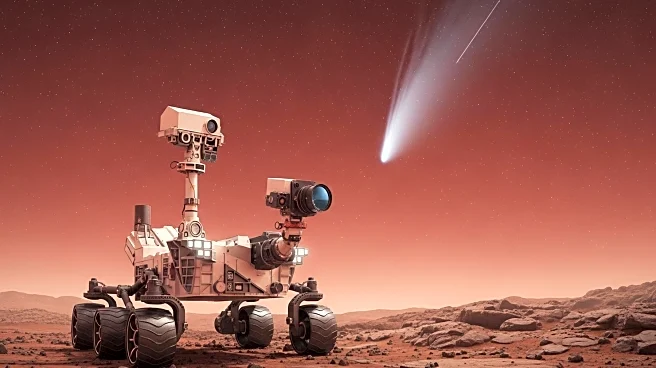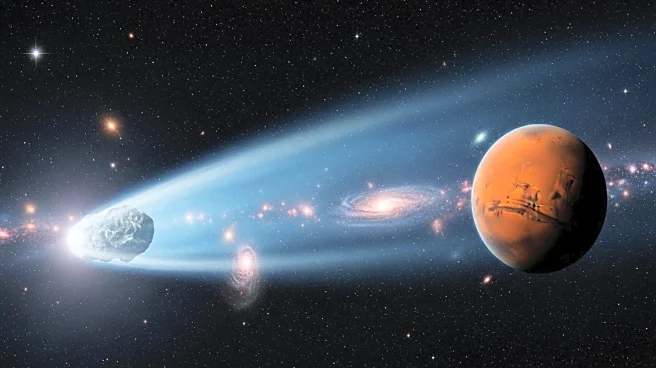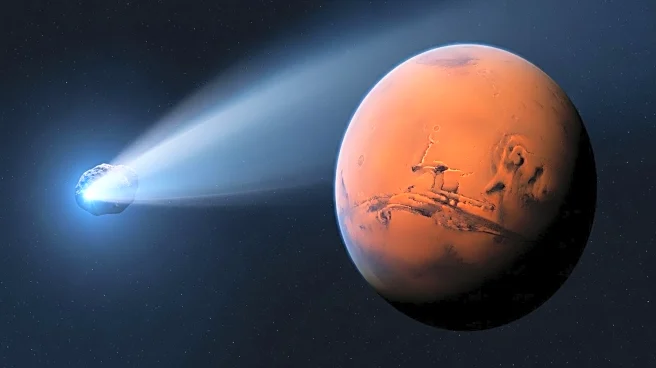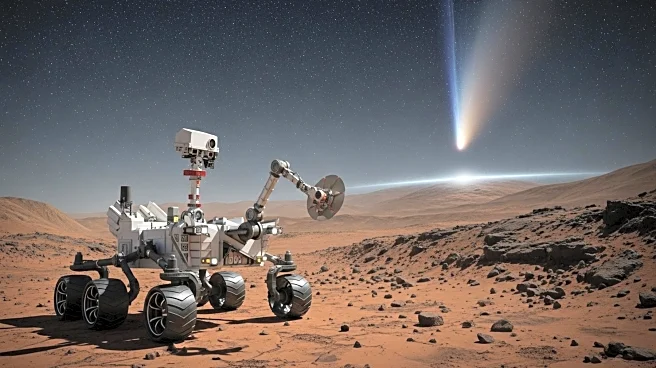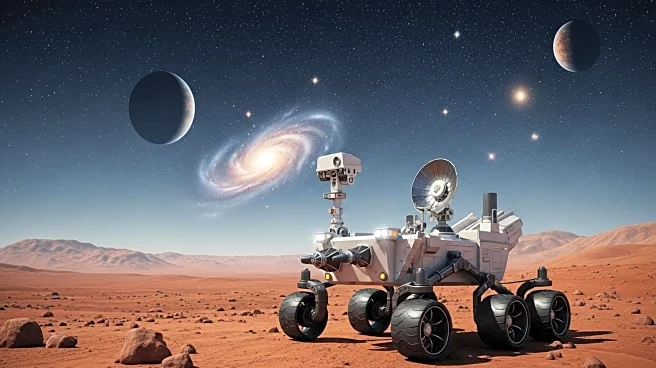What's Happening?
The European Space Agency has released images of a rare interstellar comet, 3I/ATLAS, as it passed close to Mars. This comet is only the third of its kind confirmed to enter our solar system. The images were captured by two Mars orbiters, showing the comet as a bright, fuzzy white dot moving against a backdrop of distant stars. The comet, which poses no threat to Earth, was approximately 18.6 million miles away from Mars at the time of observation. Since its discovery in July, 3I/ATLAS has been photographed multiple times, including by the Hubble Space Telescope. The comet is expected to make its closest approach to the sun in late October, passing between the orbits of Mars and Earth.
Why It's Important?
The observation of interstellar comet 3I/ATLAS provides a unique opportunity for scientists to study objects from outside our solar system. These comets carry clues about the formation of worlds beyond our own, offering insights into the broader universe. The data collected from these observations can enhance our understanding of cometary composition and behavior, which is crucial for future space exploration missions. The rarity of interstellar comets makes each observation significant, as they can reveal information about the conditions and materials present in other star systems.
What's Next?
Scientists will continue to analyze data from the Mars orbiters, combining multiple images to detect the faint comet. As 3I/ATLAS moves through the solar system, astronomers are keen to study its size and physical properties. The comet is expected to reappear on the opposite side of the sun by early December, allowing for further observations. NASA plans additional monitoring using various telescopes and space observatories, including the James Webb Space Telescope and the Parker Solar Probe.
Beyond the Headlines
The study of interstellar comets like 3I/ATLAS can contribute to our understanding of the universe's origins and the potential for life beyond Earth. These comets are considered 'true outsiders,' carrying information about the formation of worlds far from our solar system. The ongoing analysis of such objects may lead to discoveries about the building blocks of planets and the conditions necessary for life.

